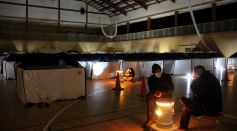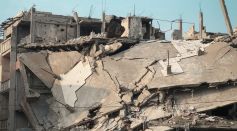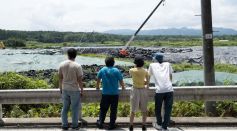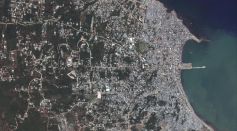Tags: Earthquake
16-Foot Serpent-Like Mythical Fish Believed to Be a 'Bad Omen' Found Off the Coast of Chile; Is There a Looming Earthquake?

Seattle at Risk of Tsunami from Fault That Remained Silent for 1,100 Years

Earth’s Outer Core Is Changing Based on Seismic Waves From Earthquakes, Study Claims

Small-Scale Earthquakes Underestimated, Could Trigger Larger Tsunamis Than Expected

Peru and Bolivia Jolted by an Earthquake With Seismic Magnitude Scales of 7.2

Can Subsea Cables Detect Earthquake? UK Researchers Claim It’s Possible Through Making Seafloor Sensors!

NASA Jet Propulsion Laboratory Announces Largest Extraterrestrial Earthquake Detected by InSight Lander on Mars

Largest Earthquake in History Caused Enormous Tsunami and Moved Massive Boulders from Chile to New Zealand

Powerful 7.3-Magnitude Earthquake Hits Fukushima, Japan 11 Years After Nuclear Reactor Meltdown

Magnitude 7 Earthquake Could Strike Central US Within 50 Years; Population Near New Madrid Fault Line Advised to Prepare ASAP
Satellite Captured Glowing Lava Inside Erupting Kilauea Volcano in Hawaii; USGS HVO Records Magnitude-6.2 Earthquake, Aftershocks

Surviving Tsunami: What To Do Before and After the Devastating Calamity

Madagascar's Biggest Oceanic Quake Formed the Largest Underwater Volcano
San Andreas Fault Map: What Cities Would Be Affected When Huge Earthquake Hits California?

NASA InSight Mars Lander Detects 3 Massive Earthquakes in Red Planet, Records Strongest Marsquake at 4.2 Magnitude

Geologic Evidence Discovered: New Source Identified for Unusually Large Earthquakes, Tsunamis in Tokyo

The Face of Destruction From Space: Satellite Captures Aftermath of Devastating Haiti Earthquake

Magnitude 7.2 Earthquake Jolts Haiti; Here's Why This Caribbean Country Is Prone to Disasters

Earthquake Detected Through Flying Balloon; Scientists to Use the Same Instrument to Detect 'Venusquakes'
Earthquake in Mauna Loa Could Trigger the Largest Volcanic Eruption
Most Popular

Trump Administration Declares COVID-19 Likely Originated from Wuhan Lab Leak, Citing Scientific Evidence

Mysterious Structures Discovered Beneath the Pacific Ocean, Puzzle Scientists

Largest Known Volcanic Aquifer Discovered Beneath Oregon's Cascades

New 'Supergiant' Sea Bug Found in South China Sea, Named After Darth Vader





